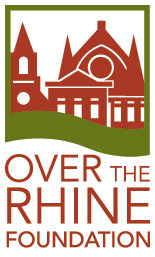

OTR News & Events
Quick Links |
Guide to OTR ArchitectureOver-the-Rhine is one of the largest, most intact urban historic districts in the United States. It is physically and architecturally comparable to New Orleans’ French Quarter and the historic districts in Charleston and Savannah, however its current state of neglect and turbulent past can make that difficult to see. Over-the-Rhine covers roughly 362.5 acres and contains over 1,100 historically-contributing buildings. The neighborhood has a variety of architectural styles that were common in nineteenth and early twentieth century urban America; muted Greek Revival, Italianate, and Queen Anne. This is a brief guide to OTR architecture, examples of the styles defined here, their elements and what makes the neighborhood such a unique and endangered historic community. Cornices: This decorative, protruding feature at the top of a building's façade plays a large role in OTR’s architecture. While Cornices appear to be sturdy, most are made of sheet metal and are very fragile. Greek Revival: Greek Revival was popular between 1830 and 1860. An ornate Greek Revival style was frequently used for public buildings, with dramatic entryways and large Grecian columns. However, plain, rectangular stone window framing in OTR is representative of the muted Greek Revival style. Cornices tend to be smaller and less ornate than the later, Italianate period. Because they are less ornamental, muted Greek Revival buildings in Over-the-Rhine are often dismissed by casual observers as unimportant. However, as a general rule, the simpler and less ornate an OTR building is, the more likely it is to have been constructed prior to the Civil War, making it some of the nation’s oldest urban architecture. Italianate: Italianate styling dominated the urban Cincinnati housing boom between 1860 and 1880. Urban Italianate style is characterized by wide, ornamental, projecting roof cornices, typically with brackets, window and door cornices, and often elaborate entryways or storefronts. The roof cornices conceal flat or low-pitched roofs. OTR is believed to possess the largest collection of Italianate architecture of any neighborhood in America. Queen Anne: The Queen Anne style was most popular from 1880 through 1910. On single-family homes in more rural settings, it is most typically associated with delicate, "gingerbread" details. In urban settings like OTR, Queen Anne manifests itself through heavy ornamentation. Brick used during earlier periods is porous and was always meant to be painted. New forms of glazing and brick production permitted the brick to be exposed in Queen Anne architecture, and much of its style comes from masonry insets, and contrasting colors of brick and stone. The "keyboard" brick design above windows found throughout OTR is common of this style. Other OTR Architectural StylesThe majority of OTR buildings are described in one of the above architectural styles, however other styles are represented in the neighborhood. Gothic Revival: Popular in Cincinnati between 1850 and 1870, Gothic Revival features brick or stone construction with pointed arch windows and battlements. Art Deco: Popular between 1930 and 1950, is rare in OTR as by that time there very little undeveloped land in the neighborhood. BreweriesOTR was the center of Cincinnati's Brewing Industry, with over a dozen breweries in the neighborhood or on the border of the canal during the late-nineteenth and early-twentieth centuries. As the breweries became larger and more prosperous, they built increasingly ornate and architecturally significant buildings that became part of their image. Many have been razed, but some excellent pre-Prohibition buildings remain, including the Christian Moerlein barrel house and bottling plant in the Findlay Market District. Red Top was the last of the original commercial brewers to brew in OTR, closing during the 1950's. Roads and AlleysIn the heyday of OTR, the streets and alleys in the neighborhoods were paved with cobblestone, granite, block or brick; one alley off Main Street is even wood. During modern road work and installation and repair of sewer lines and utilities little regard has been shown for the underlying historic surfaces. Most of the stone streets have been covered with asphalt or concrete. Virtually indestructible granite blocks have been ripped up and discarded in favor of asphalt. |